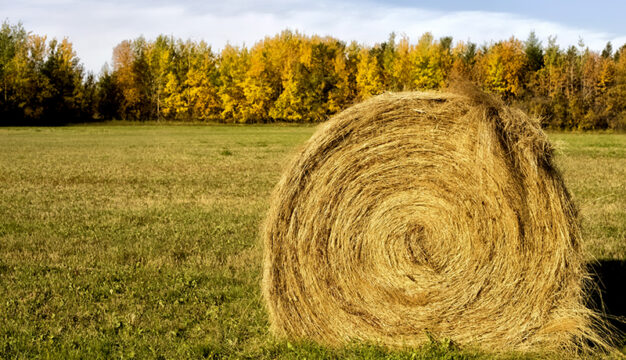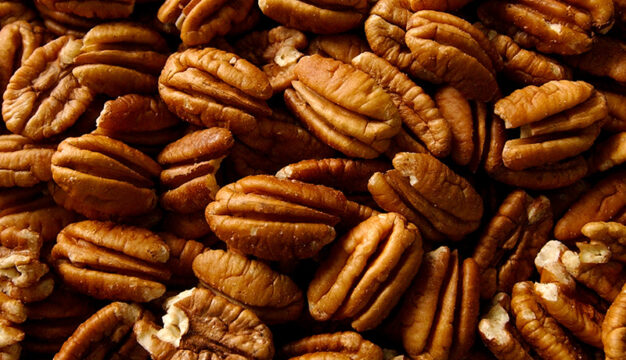West Indian Manatee
 West Indian Manatee and Calf
The West Indian manatee (Trichechus manatus), or "sea cow," is an aquatic mammal found only in warm coastal waterways in the southern United States and Central and South America and is the only species of manatee found in Alabama's waters. It is the state marine mammal and is most commonly found in areas all around the Gulf Coast and Mobile Bay. The species had been listed as a "threatened" species but is now considered "endangered." Manatees belong to the Order Sirenia whose name comes from the word siren, a sea creature from Greek mythology whose songs would lure sailors to their demise and once mistook for mermaids. The manatees are in the Trichechidae Family, which also includes the Amazonian manatee (T. inunguis) and African manatee (T. senegalensis), and are most closely related to elephants and hyraxes. Their genus name comes from the Latin word for "hair" and the species names comes from the Carib word manti, meaning "breast" or "udder."
West Indian Manatee and Calf
The West Indian manatee (Trichechus manatus), or "sea cow," is an aquatic mammal found only in warm coastal waterways in the southern United States and Central and South America and is the only species of manatee found in Alabama's waters. It is the state marine mammal and is most commonly found in areas all around the Gulf Coast and Mobile Bay. The species had been listed as a "threatened" species but is now considered "endangered." Manatees belong to the Order Sirenia whose name comes from the word siren, a sea creature from Greek mythology whose songs would lure sailors to their demise and once mistook for mermaids. The manatees are in the Trichechidae Family, which also includes the Amazonian manatee (T. inunguis) and African manatee (T. senegalensis), and are most closely related to elephants and hyraxes. Their genus name comes from the Latin word for "hair" and the species names comes from the Carib word manti, meaning "breast" or "udder."
The manatee is fully aquatic with a large seal-shaped body. They are surprisingly agile in the water, and many individuals have been seen doing rolls, somersaults, and even swimming upside-down. Manatees have a large paddle-shaped tail and pair of flippers with three to four nails located on the end of each flipper. The West Indian manatee is the largest of all the manatee species, weighing up to 1,300 pounds (~590 kilograms) and being up to 12 feet (~3.6 meters) in length. Female manatees are generally larger than the males. They have been known to live up to 60 years, but the average lifespan is around 30 years. Manatees have thick, finely wrinkled skin and are generally shades of gray in coloration but can range from black to light brown. These colorations can also vary because of algae or other lifeforms, like barnacles, that live on their skin. Manatees have sparse, coarse tactile hairs, known as vibrissae, all over their body used for feeling different textures in their environment, somewhat like human fingertips, and for detecting water currents and other stimuli in their environment. The vibrissae on their faces are also used to grasp their plant foods. Most mammals only have vibrissae on their facial area, commonly known as whiskers.
 Manatee Research Study
Distribution of the West Indian manatee is limited to warm waters because of its low metabolic rates and lack of a thick layer of insulating body fat. In the United States they are mostly found in the shallow coastal waterways of Alabama, Florida, Georgia, Mississippi, and South Carolina. Manatees are able to withstand large changes in salinity and can live in both freshwater and saltwater habitats such as rivers and estuaries. They have been known to follow rivers inland for miles from the coast but cannot tolerate water temperatures below 68°F (~20°C) for extended periods of time. In Alabama, the West Indian manatee can be found in the Mobile Bay area and the Mobile-Tensaw Delta as well as all along the coast. The Dauphin Island Sea Lab on Dauphin Island, Mobile County, keeps data on all manatee sightings in Alabama and has an interactive map that provides the public with information about the best places and times to see them.
Manatee Research Study
Distribution of the West Indian manatee is limited to warm waters because of its low metabolic rates and lack of a thick layer of insulating body fat. In the United States they are mostly found in the shallow coastal waterways of Alabama, Florida, Georgia, Mississippi, and South Carolina. Manatees are able to withstand large changes in salinity and can live in both freshwater and saltwater habitats such as rivers and estuaries. They have been known to follow rivers inland for miles from the coast but cannot tolerate water temperatures below 68°F (~20°C) for extended periods of time. In Alabama, the West Indian manatee can be found in the Mobile Bay area and the Mobile-Tensaw Delta as well as all along the coast. The Dauphin Island Sea Lab on Dauphin Island, Mobile County, keeps data on all manatee sightings in Alabama and has an interactive map that provides the public with information about the best places and times to see them.
West Indian manatees have unusual teeth among mammals. High crowned molars are continuously generated in the back of the mouth and slowly migrate towards the front of the mouth at a rate of 1 to 2 mm per month. Each tooth eventually falls out at the front of the jaw, unlike in other herbivores who maintain their set of adult teeth that continue to grow from the root as they are worn down. This unlimited tooth production is beneficial because manatees eat vegetation for roughly six to eight hours per day, continuously wearing their teeth down. Manatees can consume up to 10 percent of their body weight per day as they forage around the bottom of waterways. Although West Indian manatees are herbivorous, consuming a variety of different freshwater and saltwater plants, such as water lettuce, floating hyacinth, sea grasses, sea clover, and marine algae; they have been known to eat small quantities of fish as well. The manatee's prehensile snout is used for grabbing vegetation and also for social interaction and communication. Manatees have been known to "walk" along the bottom, using their front flippers to dig for plants and roots and then scooping them into their mouth. West Indian manatees communicate by emitting a wide range of sounds when together, especially between cows and their calves. They often remain just below the surface with their snout peeking out above the water line. When not eating, the manatee spends most of its day sleeping submerged and surfaces for air every 15 to 20 minutes or so.
Manatees do not have a set breeding season, and they can mate any time of year. Though they are normally solitary, bulls will congregate into mating herds around a female when she is ready to breed. Reproductive rates are extremely low in manatees, with a single calf being born only once every two years. Gestation lasts about 12 months. Manatee calves are between 3 and 4 feet (~1 meter) in length and weigh between 40 and 60 pounds (~18 to 27 kilograms) at birth. Calves suckle for 12 to 18 months but can begin eating solid vegetation within a few weeks.
The state of Alabama designated the West Indian manatee as its official state marine mammal in 2009. The U.S. Fish and Wildlife Service announced in 2017 that, as a result of the significant improvements in its population and habitat conditions, the West Indian manatee had been down-listed from endangered to threatened status under the Endangered Species Act. The species was originally placed on the list in the 1970s when only several hundred were left in the wild. The West Indian manatee was hunted for hundreds of years for meat and hide and continues to be hunted in parts of Central and South America. The biggest threats to the species in Alabama today are collisions with boating vessels, entanglement in fishing gear, and red tide algae blooms. Many manatees can be seen with large white scars or deformities to their tails and flippers resulting from boating accidents. These scars are used by scientists to identify individuals within the population and data collection.
Further Reading
- Reep, Roger L., et al. "Microanatomy of Facial Vibrissae in the Florida Manatee: The Basis for Specialized Sensory Function and Oripulation." Brain, Behavior and Evolution 58 (July 2001): 1-14.
- Husar, Sandra L. "Trichechus manatus." Mammalian Species 93 (January 1978): 1-5.



